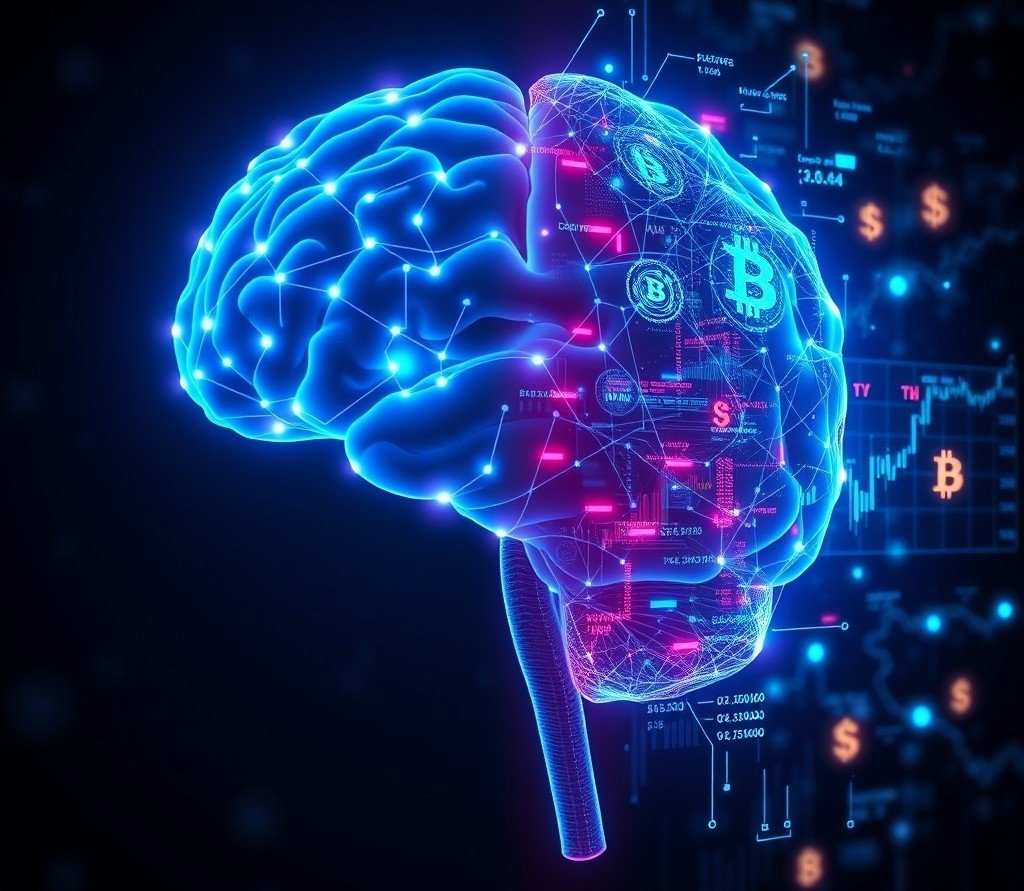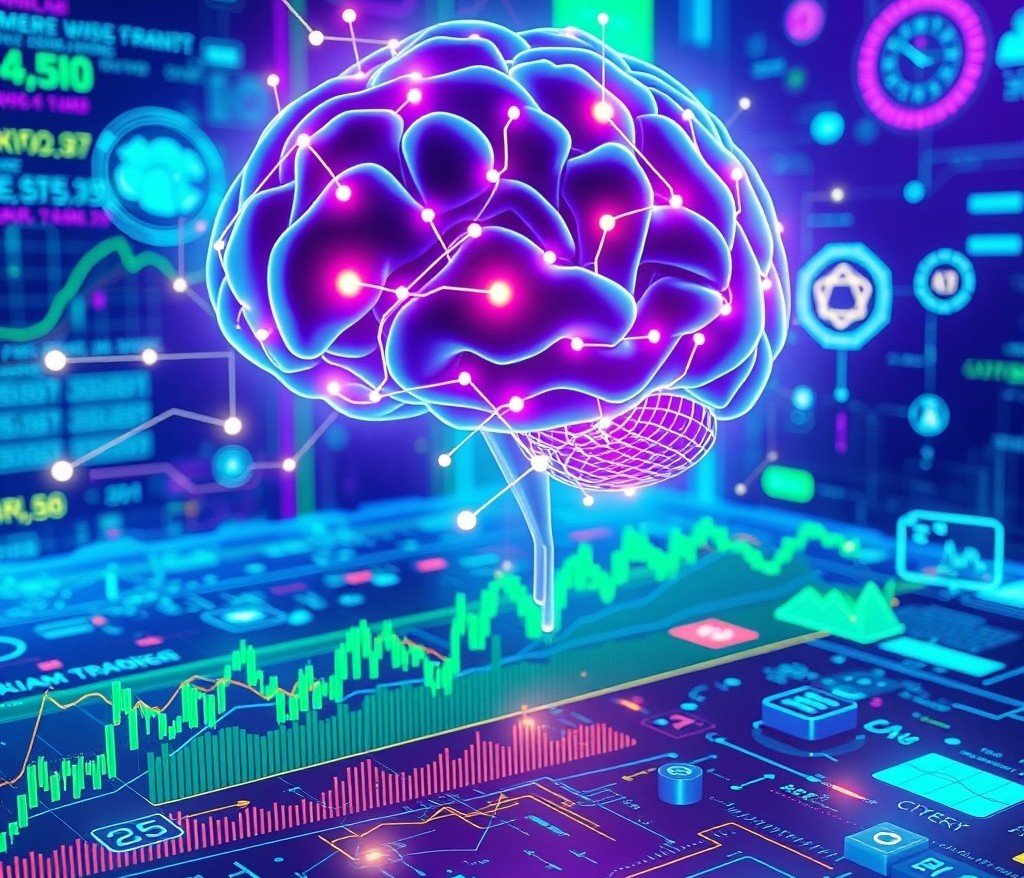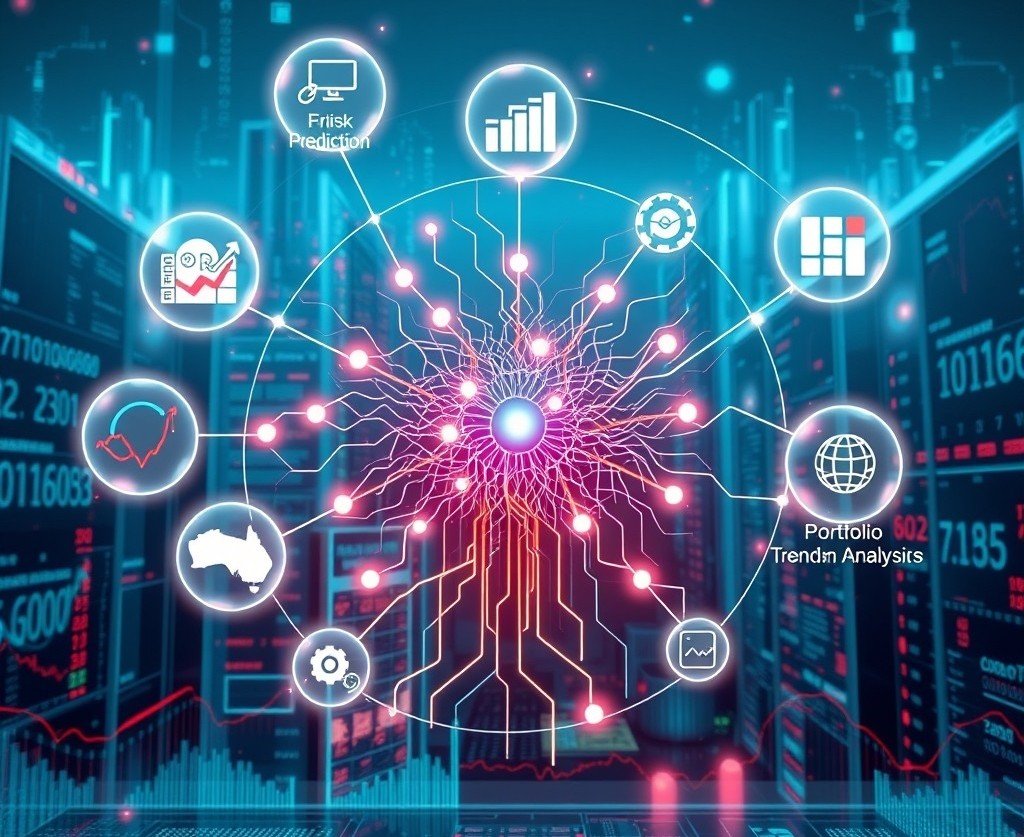Neural Finance: Revolutionizing Financial Decision Making
Neural Finance is a groundbreaking approach that merges artificial intelligence, particularly neural networks, with financial modeling and behavioral economics. As traditional methods struggle to adapt to fast-paced, data-heavy markets, Neural Finance introduces adaptive, intelligent systems that mimic human learning and decision-making.
What is Neural Finance?
Neural Finance uses computational neuroscience and AI to model, predict, and analyze financial markets. By simulating the neural activity of the human brain, these models can detect patterns, forecast market movements, and identify investment opportunities more efficiently than classical models. It enhances decision-making, makes risk prediction more robust, and uncovers insights previously hidden by traditional analysis methods.
The Science Behind Neural Finance

Neural Finance is rooted in three key disciplines: neuroscience, machine learning, and behavioral finance. Neuroscience informs how financial behaviors are influenced by cognitive functions. Machine learning enables self-improving predictive models. Behavioral finance explains irrational investor actions. Together, they create systems capable of understanding both market mechanics and human behavior.
History and Evolution of Neural Finance
The concept of applying neural networks in finance began in the 1990s. Early systems used simple feedforward networks for stock price prediction. Over time, the rise of high-performance computing and availability of big data allowed the development of more complex models like recurrent and convolutional neural networks. Neural Finance matured in the 2010s with the adoption of AI in fintech and algorithmic trading.
Key Technologies Driving Neural Finance

- Artificial Neural Networks (ANNs): Mimic brain activity to find patterns in data.
- Deep Learning (DL): Uses multi-layered networks for advanced tasks like NLP and image recognition.
- Reinforcement Learning: Enables models to learn via trial and error, useful in portfolio optimization.
- Natural Language Processing (NLP): Extracts sentiment and meaning from financial news, reports, and social media.
- Big Data Analytics: Supports training models with massive datasets including prices, trades, and sentiment.
- Blockchain: Offers immutable records and transparency that complement neural finance models.
Machine Learning and Neural Networks in Finance

Machine learning provides the tools to analyze data patterns and make predictions. Neural networks—especially deep learning models—can model nonlinear relationships in markets, detect fraud, and personalize financial services. Financial institutions use these models for:
- Algorithmic trading
- Portfolio optimization
- Credit scoring
- Risk assessment
- Customer segmentation
Deep Learning Architectures in Financial Applications

- Convolutional Neural Networks (CNNs): Used for visual pattern recognition in price charts.
- Recurrent Neural Networks (RNNs) and Long Short-Term Memory (LSTM): Ideal for time-series prediction.
- Autoencoders: For anomaly detection and dimensionality reduction in risk modeling.
- Transformers: State-of-the-art for NLP tasks like parsing market sentiment.
Behavioral Finance Meets Neuroscience
Investors are not always rational. Behavioral finance studies phenomena like loss aversion, overconfidence, and herd behavior. Neural Finance incorporates these elements using data from eye-tracking, EEG scans, and sentiment analysis. This fusion allows financial models to simulate investor psychology and predict responses to market stimuli.
Applications of Neural Finance

- High-Frequency Trading (HFT): Algorithms make trades in milliseconds using real-time neural analysis.
- Fraud Detection: Neural models identify abnormal transaction patterns.
- Market Sentiment Analysis: Tools scan news and social feeds to adjust strategies.
- Customer Behavior Modeling: AI predicts life events like mortgage readiness.
- Loan Underwriting: Automated systems assess creditworthiness using AI.
Real-World Use Cases
- J.P. Morgan uses neural finance to automate market-making and forecasting.
- Goldman Sachs deploys AI-based trading algorithms.
- Upstart uses neural underwriting to approve loans.
- Kensho integrates NLP for investment decision automation.
- Robo-advisors like Wealthfront use neural models to manage user portfolios.
Neural Finance in Risk Management

Neural models enhance stress testing by simulating extreme but plausible scenarios. Unlike traditional models, they adapt to new information dynamically. Use cases include:
- Predictive Credit Risk
- Market Crash Simulations
- Tail-Risk Management
- Liquidity Risk Monitoring
Investment Strategies Driven by Neural Models
These strategies leverage real-time inputs and rapid backtesting capabilities:
- Momentum and Mean Reversion
- Event-Driven Trading
- Arbitrage
- Sentiment-Based Positioning
- Risk-Parity and Volatility Targeting
Advantages of Neural Finance Models

- Adapt to new data continuously
- Process unstructured data (e.g., news, audio)
- Improve prediction accuracy
- Support autonomous decision-making
- Offer real-time strategy adjustment
Limitations and Challenges of Neural Finance
- Black Box Problem: Difficulty interpreting complex model decisions.
- Overfitting Risk: Models may perform well in training but fail live.
- Data Privacy and Security: Handling sensitive financial information securely.
- Regulatory Uncertainty: Rapid AI developments outpace legal frameworks.
Regulation, Compliance, and Ethical Considerations

As neural systems take over critical financial functions, questions arise:
- Should models explain their decisions?
- How do we prevent bias in training data?
- Who is liable when algorithms make mistakes?
Governments and institutions must establish frameworks to ensure accountability, fairness, and transparency.
The Role of Quantum Computing and Neuromorphic Chips
Quantum computing can accelerate model training and data processing. Neuromorphic chips, which mimic brain activity, will make neural models faster and more energy-efficient. These technologies will support next-gen applications like real-time global trading optimization.
Neural Finance for Individual Investors
Retail users are now benefiting from neural finance via:
- AI-Powered Investment Apps
- Chatbot Financial Advisors
- Automated Tax Planning
- Behavioral Nudges to improve savings and spending habits
Neural Finance in Emerging Markets

Developing economies can leapfrog traditional financial infrastructure using neural finance:
- Enable microcredit scoring with minimal data
- Predict inflation and exchange volatility
- Expand access to insurance and savings products
Future of Neural Finance
Neural Finance will become more personalized, accessible, and integrated. Future trends include:
- AI investment avatars tailored to individual psychology
- Neural-enhanced ESG investing
- Integration with digital currencies and DeFi platforms
- Regulation-driven model explainability
Conclusion
Neural Finance is reshaping how the world engages with money, investment, and risk. Its convergence of neuroscience, AI, and finance enables machines to understand markets and human behavior more deeply than ever before. As we enter an era of intelligent finance, the institutions and individuals who embrace this shift will gain unparalleled advantages in agility, insight, and performance.
FAQ’s
1. What is neural trading?
Neural trading uses artificial neural networks to analyze financial data and make trading decisions. It mimics human brain patterns to detect trends and predict market movements.
2. Where is Neural Payments headquarters?
Neural Payments is headquartered in Fishers, Indiana, USA. The company specializes in peer-to-peer payment solutions for financial institutions.
3. What is a neural network in finance?
A neural network in finance is a machine learning model that analyzes large financial datasets. It helps in tasks like stock prediction, risk assessment, and algorithmic trading.
4. What is the meaning of neuro finance?
Neuro finance studies how psychological and neural factors affect financial decision-making. It combines neuroscience, psychology, and economics.
5. Is it possible to predict stock prices with a neural network?
Yes, neural networks can forecast stock price trends based on historical and real-time data. However, accuracy is limited due to market volatility and external factors.
6. What does neural mean in AI?
In AI, “neural” refers to neural networks, which are algorithms inspired by the human brain. They enable machines to learn patterns, make predictions, and adapt over time.


